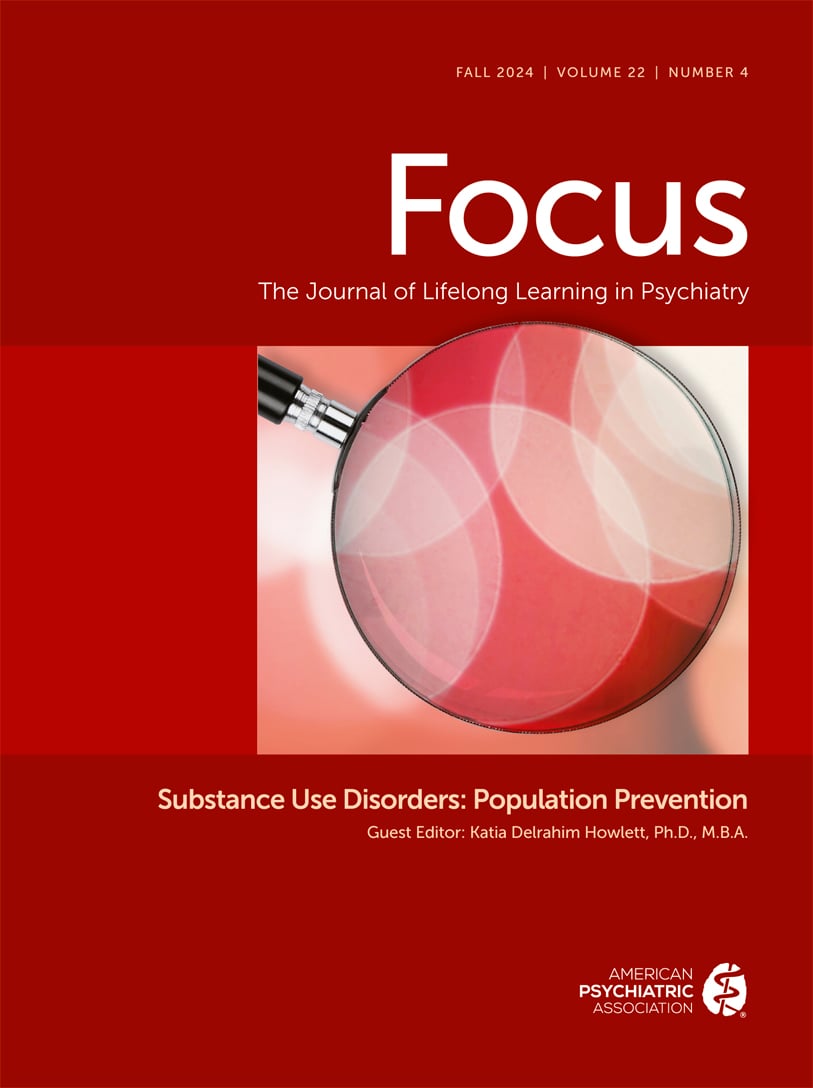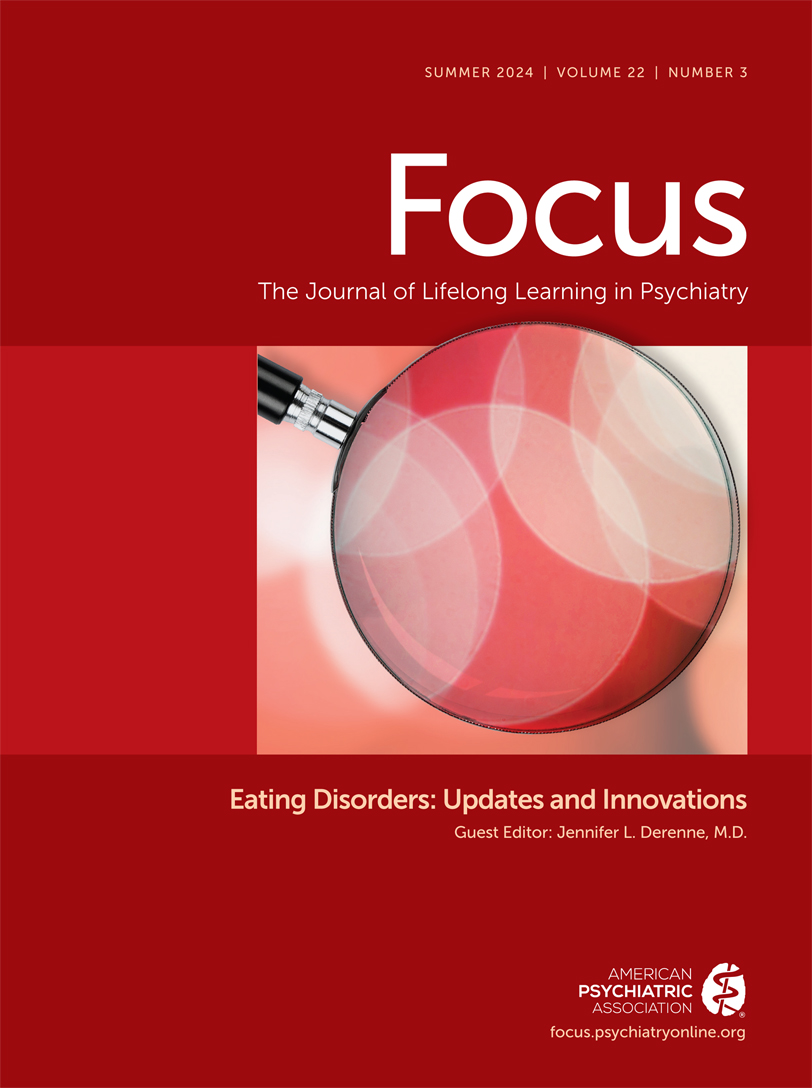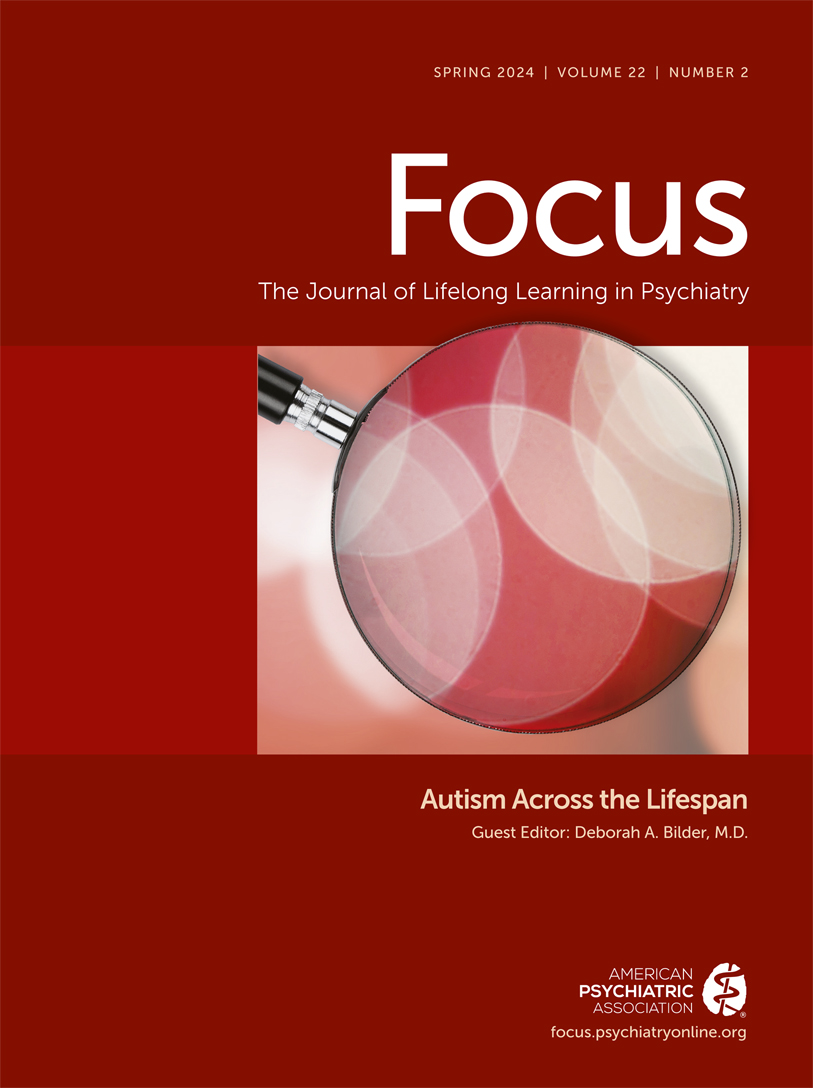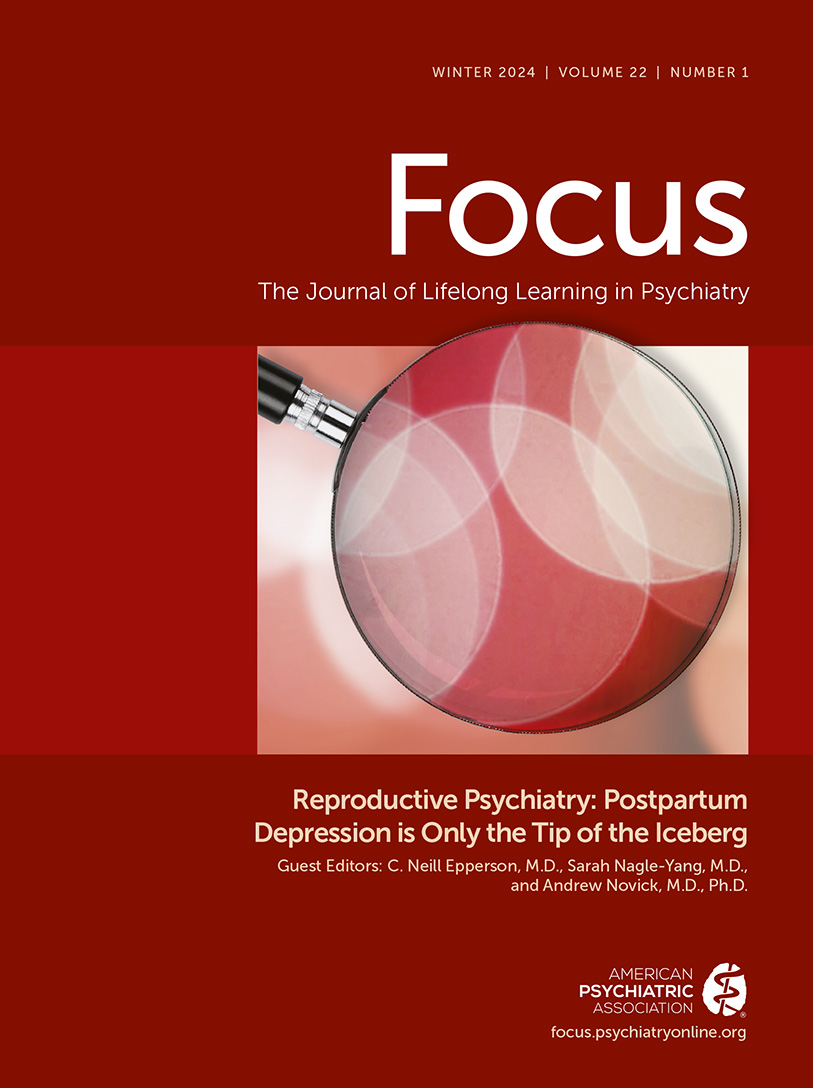Focus
- Volume 9
- Number 3
- July 2011
FROM THE GUEST EDITOR
CLINICAL SYNTHESIS
Publication date: 01 July 2011
Pages253–263We know from clinical experience and clinical trial outcomes that many panic disorder sufferers are incompletely responsive to the initial treatment. Based on accruing evidence in the literature and clinical experience, inadequate treatment appears an ...
https://doi.org/10.1176/foc.9.3.foc253Publication date: 01 July 2011
Pages264–272It is now well established that chronic pain and various anxiety disorders frequently co-occur. Co-occurrence of chronic pain is often unrecognized in anxiety disorder settings; yet, when unaddressed, it can complicate treatment, reduce treatment ...
https://doi.org/10.1176/foc.9.3.foc264Publication date: 01 July 2011
Pages273–277In recent years, our knowledge of social phobia has included important advances in the understanding of the epidemiology, neurobiology, and neural circuitry of social phobia. In this clinical synthesis, we will review the diagnosis, psychopharmacological ...
https://doi.org/10.1176/foc.9.3.foc273Publication date: 01 July 2011
Pages278–285Positive psychotic symptoms may be relatively prevalent in posttraumatic stress disorder (PTSD). PTSD with secondary psychotic features (PTSD-SP) is an emerging diagnostic entity. Phenomenological, epidemiological, and biological studies support the ...
https://doi.org/10.1176/foc.9.3.foc278Publication date: 01 July 2011
Pages286–288This exercise is designed to test your comprehension of material presented in this issue of FOCUS as well as your ability to evaluate, diagnose, and manage clinical problems. Answer the questions below, to the best of your ability, on the information ...
https://doi.org/10.1176/foc.9.3.foc286INFLUENTIAL PUBLICATIONS
Publication date: 01 July 2011
Pages294–296This section contains a compilation of recent publications that have shaped the thinking in the field as well as classic works that remain important to the subject reviewed in this issue. This bibliography has been compiled by experts in the field and ...
https://doi.org/10.1176/foc.9.3.foc294ERRATUM
INFLUENTIAL PUBLICATIONS
Publication date: 01 July 2011
Pages299–310Pediatric anxiety disorders are prevalent, chronic, and often lead to significant impaired functioning that impacts both short- and long-term outcomes for children and adolescents. Treatment options include pharmacotherapy and psychosocial interventions. ...
https://doi.org/10.1176/foc.9.3.foc299Publication date: 01 July 2011
Pages311–334Anxiety disorders are a significant problem in the community, and recent neuroimaging research has focused on determining the brain circuits that underlie them. Research on the neurocircuitry of anxiety disorders has its roots in the study of fear ...
https://doi.org/10.1176/foc.9.3.foc311Publication date: 01 July 2011
Pages335–350Acute stress disorder (ASD) was introduced into DSM-IV to describe acute stress reactions (ASRs) that occur in the initial month after exposure to a traumatic event and before the possibility of diagnosing posttraumatic stress disorder (PTSD), and to ...
https://doi.org/10.1176/foc.9.3.foc335Publication date: 01 July 2011
Pages351–368Background: The anxiety disorders specified in the fourth edition, text revision, of The Diagnostic and Statistical Manual (DSM-IV-TR) are identified universally in human societies, and also show substantial cultural particularities in prevalence and ...
https://doi.org/10.1176/foc.9.3.foc351Publication date: 01 July 2011
Pages369–388Initiated as part of the ongoing deliberation about the nosological structure of DSM, this review aims to evaluate whether the anxiety disorders share features of responding that define them and make them distinct from depressive disorders, and/or that ...
https://doi.org/10.1176/foc.9.3.foc369Publication date: 01 July 2011
Pages389–398Background: Panic disorder is a heterogeneous disorder, comprising a variety of somatic, physiological, and cognitive symptoms during repeated panic attacks. As a result, considerable data have examined whether panic attacks may be classified into ...
https://doi.org/10.1176/foc.9.3.foc389Publication date: 01 July 2011
Pages399–410Objective: Previous theories have emphasized the role of excessive glucocorticoid activity in the pathology of chronic stress. Nevertheless, insufficient glucocorticoid signaling (resulting from decreased hormone bioavailability or reduced hormone ...
https://doi.org/10.1176/foc.9.3.foc399Past Issues
View Issues Archive
Vol. 22 | No. 4

Vol. 22 | No. 3

Vol. 22 | No. 2
